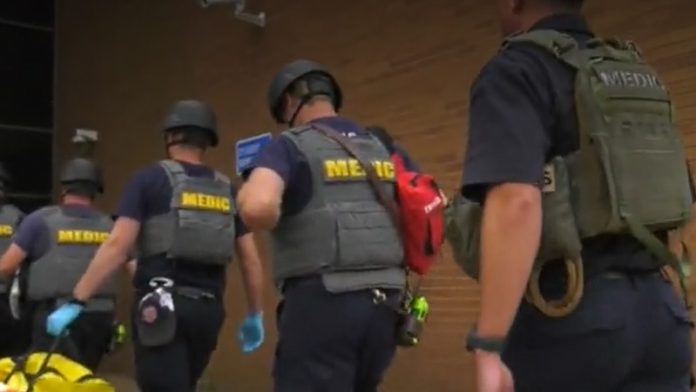North Little Rock, Arkansas – To protect pupils, MEMS and the fire departments of the metro region are preparing for the worst.
Active shooter and mass casualty training is being conducted this week for the North Little Rock, Sherwood, and Gravel Ridge Fire Departments from Monday through Wednesday.
The simulated emergency is what it would be like if an active shooter injured many people, leaving them in need, moving quickly and completely with first aid supplies and bulletproof vests.
Wesley Stephens, the chief of the North Little Rock Fire Battalion, said their vehicles typically have a maximum carrying capacity of one, two, or three persons.
“This scenario right here, it overwhelms our resources very, very quickly,” Stephens said. “It can also overwhelm our hospitals.”
An approach has been devised and is being used to decide who receives care first. Each fireman receives training on both vital abilities they don’t use every day, such as communicating with a command station of police, fire, and EMS, or determining who needs to be removed first for treatment, while also reviewing procedures they frequently use, like as stopping bleeding.
“We tend to try and save anyone we come across, and in this situation, there are sometimes you may have to write somebody off that’s probably not going to make it to help somebody with a better chance of survivability,” Stephens explained.
MEMS Responder Liaison Bob Hunthrop is educating organizations in central Arkansas about a new method for classifying and transporting patients this year.
“The goal is to get the patients that are the most urgent off the scene as quickly as possible to the hospitals,” Hunthrop said.
The new approach employs triage tape, which indicates whether a person is green and able to wait or red and in need of immediate attention. Other hues indicate whether a person is alive or dead. The tape will take the place of a card-based system that might be challenging to read in low light or while wearing thick garments.
“When you walk into a room or are if you are at a treatment area, you want to very easily see what their tag is,” Hunthrop said.
In the firefighter’s classroom, every additional second could mean the difference between life and death. not just in the event of a school shooting, but also in other crises all year long.
“This is the same people we respond with every day whether it is a tornado or a large vehicle accident on the Interstate, so practicing with them helps with those as well,” Stephens said.
To reach both the men and the women in the participating departments, the training began on Monday and ends on Wednesday. The Little Rock Fire Department will receive comparable instruction, claims Hunthrop.

